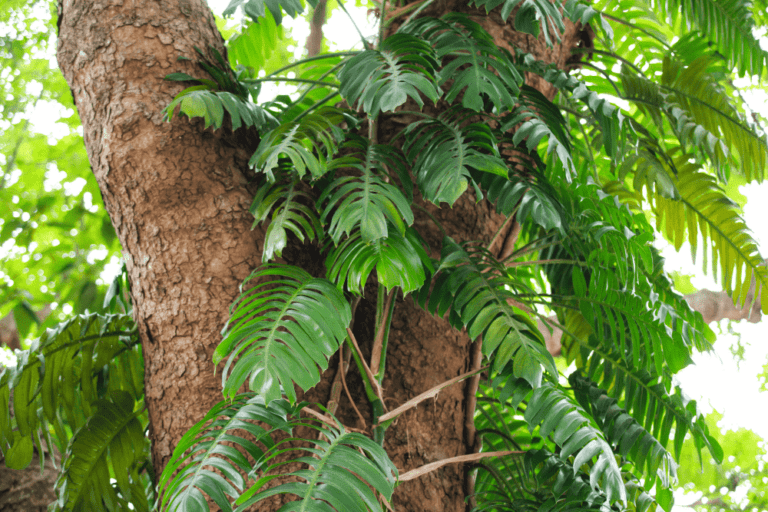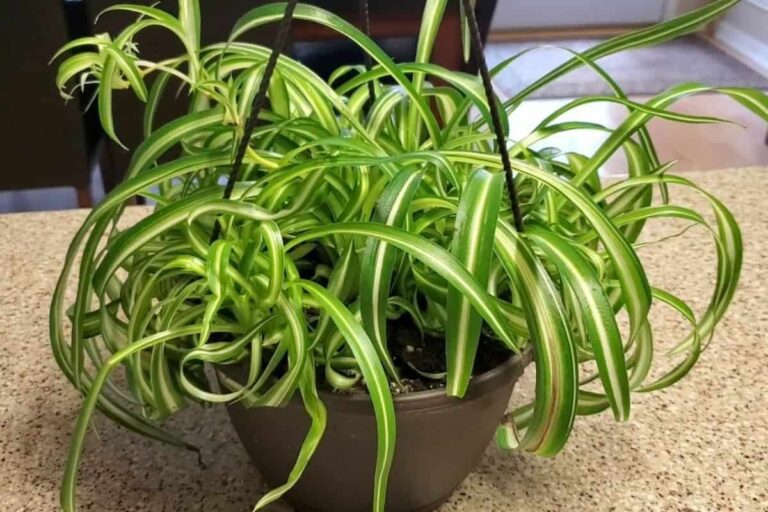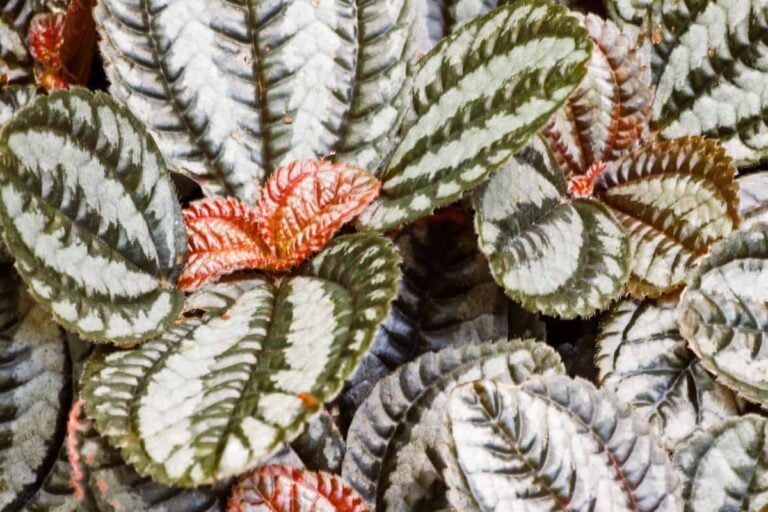Best Plants for Your Bedroom
The Benefits Of Houseplants in Your Bedroom
Plants have a wide range of psychological effects from reducing anxiety to increasing productivity. The science is clear: Immersing yourself in nature is a foolproof way to relieve stress and boost your mood.But plants have even broader applications when brought inside the home.
Houseplants can also serve a functional role in improving the quality of the air in your bedroom, moderating humidity levels, producing oxygen and filtering out pollutants naturally. In fact, NASA conducted research identifying some of the best plants for this purpose.
Aside from clearing CO2 and releasing oxygen, plants also produce negative ions — a technology now included in many top market air-purifying machines. These negative ions attach to harmful compounds and particles in the environment; removing dust, mold spores, bacteria and allergens. Other research has indicated that negative ions may also have a positive effect on our psychological health.
Additionally, by releasing water vapor during transpiration, certain houseplants can help maintain or even increase humidity level in a room. Reducing the risk of ailments caused by dry air, and aiding in the suppression of airborne microbes.
But which plants are the best for the job? The answer to this question depends on both the properties of the plants themselves and your personality. Are you someone who’s a notorious plant killer? Do you love the scent of flowers wafting in through the air?
You’ll surely find a plant to suit both your style and needs in our list of the Best Plants For Your Bedroom.
Low-Maintenance
Not all of us were born with a green thumb, but that doesn’t mean you can’t enjoy the benefits of houseplants. There are many plants out there that require only a minimal amount of care and even some that even thrive with neglect.
Snake Plant
Snake plants top both our list for low-maintenance as well as NASA’s top 10 air-purifying plants. These plants have no issue with being ignored, requiring the minimal amount of care to remain happy and healthy. They don’t want for much, including water and light, making them an ideal addition to a dark bedroom.
These plants are one among few that continue to convert CO2 into O2 during the night (most varieties only put in their share of work during the daytime). This boosts their air-purifying abilities and keeps your room feeling fresh.
Pothos
Pothos is another NASA favorite thanks to its superior ability to remove formaldehyde from its environment. While a little more needy than the Snake Plant, Pothos only asks for a few hours of sunlight each day and a drink of water one time per week.
These plants grow exceptionally well at cooler temperatures, which coincides for the recommendations for where you should be setting your thermostat in the bedroom to promote sleep. However, Pothos is mildly toxic and thus should be kept out of reach of children and pets — thankfully it makes a beautiful hanging plant.
Spider Plant
Spider Plants are perhaps the most common houseplant, which can likely be chalked up to the fact that they’re low-maintenance and easy to propagate. They’re one of the best when it comes to cleansing the air, effectively eliminating a series of common household pollutants including benzene, formaldehyde, carbon monoxide and xylene.
These charming plants have the added benefit of absorbing odors and fumes while helping to increase the amount of oxygen in your bedroom. They also feel at home in a wide variety of environments, simply water occasionally and enjoy!
Aloe Vera
Aloe Vera plants have an exotic look without being especially needy. As they are succulents and thus similar to cacti, these plants thrive in a dry environment with lots of sun. Frequent waterings are not needed — in fact, these plants prefer it if you let their soil go completely dry before replenishing them.
Included on NASA’s list of plant air-purifiers, Aloe also releases oxygen at night similar to the Snake Plant. These plants can also be used to monitor the quality of the air in your home: When pollutants are too concentrated for your aloe to filter its leaves will develop brown spots.
In a pinch you can even use the gel from your Aloe plant as a topical treatment for small cuts, insect bites, burns and even to relieve dry skin.
English Ivy
The #1 spot on NASA’s list goes to English Ivy: an evergreen vine that’s incredibly easy to keep content and requires only moderate sunlight. Further studies have shown this ivy to be effective in improving the symptoms of allergies and asthma by removing 94% of airborne fecal matter and 78% of airborne mold in under 12 hours. However, as with Pothos, English Ivy is toxic and should be kept away from kids and animals.
Flowering
If you’d like to add a floral accent to your room these superstar perennials combine all the benefits of our low-maintenance options but with an extra pop that many find extra soothing.
Flowers can improve/increase social behavior, and are proven to elicit the Duchenne response (true smile) which is believed to be physical evidence of their positive impact on mood. In short, flowers are “super stimuli,” affecting both our external and internal experiences.
Moth Orchid
Orchids are well known for their ability to add a sense of serenity to any space — which is why they’re so popular among spas and yoga studios. While some varieties can be finicky, the Moth Orchid is more amenable, as long as the room is kept quite humid. As with most flowers they also require lots of direct sunlight so a windowsill makes a fabulous nesting place.
While not included among the top air-purifying plants, orchids produce plenty of oxygen. They even do so at night when most plants take a break for the day. Orchids have also been proven to remove harmful toluene from the air around them.
Peace Lily
The Peace Lily was the one flowering plant that topped NASA’s list of air-purifying superstars. It makes quick work of filtering out benzene, trichloroethylene and formaldehyde. These lilies are also a great way to combat dry air, as the moisture they release can increase the humidity in your bedroom by up to 5%.
Slightly toxic, these are another plant that should be kept up and out of reach. They also enjoy the shade and cooler temperatures, and will thrive with just weekly waterings.
Gardenia
These beautiful plants with glossy leaves and large blossoms are the trickiest to care for among those we’ve listed. However, if you’re willing to put in the extra work science has some very strong arguments for why you should include a Gardenia in your bedroom.
Studies have shown that Gardenias can help improve the quality of your sleep, with some going as far as to say that these plants are equal to Valium when it comes to reducing anxiety. Thus, while they do require a lot of TLC, Gardenias may be the healthy alternative to sleeping pills that you’ve been searching for.
Aromatherapy Plants
Another great way to have your houseplants doing double-duty is to include ones that have a calming scent. The smells that surround us have a significant impact on our sense of wellbeing and mental state. These plants will fill your bedroom with their perfume, soothing your nervous system and preparing your body and mind for sleep.
Jasmine
Jasmine is an exotic and intensely fragrant plant with beautiful star-shaped blossoms. These are not particularly picky plants, and while they require frequent waterings and lots of sunshine in the summer months they are far less demanding in the cooler seasons.
Essential oil pressed from Jasmine flowers has long been used to treat stress and depression; however, new studies have shown that the whole plant alone has an impressive impact on reducing anxiety and boosting mood to promote quality slumber.
Valerian
Valerian’s blooms are pink or white and have a sweet scent. They’ve been used in the production of perfumes since the 16th century, and the Roman physician Galen used to prescribe them as a cure for insomnia. As it turns out, Galen was right on the mark — simply inhaling the aroma of your Valerian flowers can induce sleepiness according to modern research.
These plants require a lot of sunlight — upwards of 6 hours per day — but they’re less picky when it comes to temperature and watering. If you’re feeling adventurous you can even harvest your Valerian’s roots to create a sleep promoting tea, or maybe just throw a few petals into a hot pre-bedtime bath.
Lavender
Lavender is well-known for its soothing properties. This lovely fragrant herb can lower your heart rate, reduce your blood pressure and relieve anxiety and stress, making it an ideal bedroom companion.
One study has shown that the scent of Lavender can reduce crying in infants and help them achieve a deeper sleep. Meanwhile, the scent helps lower stress levels in mommy as well, creating and overall better situation for everyone.
Unfortunately, in order to get the full benefits from your Lavender plant you’ll need to pay special attention to its living conditions. They require a lot of direct sunlight and feel best when potted in a vessel that is only a few inches wider than their root ball. These plants also like to be kept warm and cozy.
Geranium
Not only do Geranium’s help to purify the air, they smell lovely and even repel mosquitos. While some people are not attracted to the scent of the Rose Geranium, it’s known to have a calming effect that improves mood and reduces stress, while its sedative properties help induce sleep.
Another option is to get a scented Geranium: These come in a wide variety of aromas including apricot, nutmeg, cinnamon, lemon, mint and ginger. They’re fairly low-maintenance plants that prefer to have their soil dry out between waterings. Simply place in direct sunlight and enjoy.
If it’s time you revamped your bedroom remember to get a good mattress to ensure restful sleep; but don’t forget to choose the right colors, lighting and — of course — the perfect plant companions.




